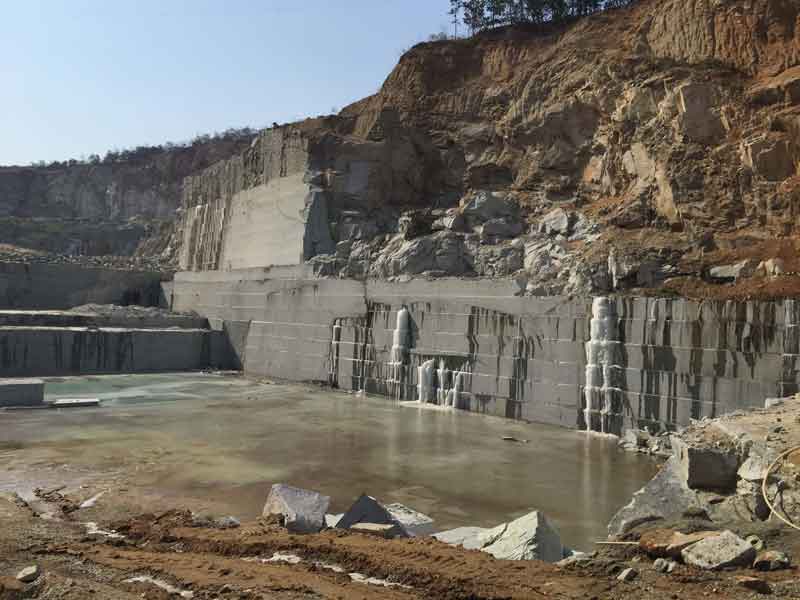Unearthing the Rich Background and Sustainable Practices of Granite Quarrying
As we base on the precipice of discovering the complex tapestry of granite quarrying, a journey through time exposes not simply the physical act of drawing out stone yet likewise the social and historic relevance woven into the really fabric of this practice. From the ancient origins that laid the foundation for modern quarrying techniques to the sustainable practices that are forming the future of this sector, each chisel mark on granite surface areas tells a story waiting to be discovered (granite quarries in south africa). The legacy of granite quarrying extends far beyond simple extraction; it is a testament to human resourcefulness, strength, and the long-lasting attraction of this magnificent rock
Old Origins of Granite Quarrying
Dating back to old worlds, the practice of quarrying granite has been an important part of human history and architectural development. The earliest proof of granite quarrying dates back to ancient Egypt, where large pyramids and complex sculptures were crafted from this resilient stone. The Egyptians used primitive tools to draw out granite blocks from quarries, showcasing the significance of this material in their monumental constructions.
Relocating ahead in history, the Greeks also made considerable payments to the quarrying of granite. The Greeks used granite in various building marvels, such as temples and statues, showing their skill in shaping and carving this sturdy rock. The Romans additionally improved the methods of quarrying granite, employing advanced devices like blades and hammers to essence and form granite for their iconic frameworks.
Via the centuries, the technique of quarrying granite has actually advanced, with modern innovations enhancing effectiveness while preserving the timeless appeal of this all-natural rock - granite quarries in south africa. From old human beings to modern building contractors, the heritage of granite quarrying continues to shape our globe
Advancement of Quarrying Methods
The advancement of quarrying techniques has actually been marked by a continual progression in the direction of greater performance and accuracy in extracting granite. Early quarrying strategies involved hands-on labor with basic tools such as chisels, hammers, and wedges to draw out granite blocks from the planet.
Innovations in computer-controlled tools and 3D modeling have actually maximized quarrying operations, leading to marginal ecological impact and boosted sustainability practices. As the need for granite proceeds to climb, the advancement of quarrying strategies stays indispensable to conference sector requires successfully and sustainably.
Social Value of Granite
Granite holds an extensive social significance across various civilizations due to its long-lasting existence in architectural work of arts and respected monuments. From the impressive pyramids of Egypt to the complex makings of the Angkor Wat temple in Cambodia, granite has been a material of selection for sharing magnificence and durability in social heritage. In old Rome, granite columns decorated temples and public structures, symbolizing strength and permanence. The cultural visit significance of granite expands beyond its physical qualities; it embodies resilience, security, and eternity, making it a symbol of sustaining traditions and traditions.

Sustainable Practices in Quarrying
Amidst the abundant history of granite quarrying and its social value exists a growing important site focus on sustainable practices within the market. As environmental awareness and worries about source exhaustion have actually enhanced around the world, the quarrying market has increasingly accepted sustainable methods to decrease its influence on the environment and bordering communities.

Furthermore, reclamation and rehabilitation of quarry sites post-extraction are important to lasting practices. By restoring quarried areas to a natural or advantageous state, such as creating wildlife habitats or leisure spaces, quarriers can offset the environmental impact of their procedures and add favorably to the regional environment.
Tradition of Granite Quarrying
With a historical backdrop steeped in workmanship and commercial progression, what withstanding effect has granite quarrying left on the landscape of modern society? The heritage of granite quarrying transcends mere removal techniques; it has shaped building wonders, metropolitan landscapes, and social heritage worldwide. The durable nature of granite has actually made it a recommended option for monuments, buildings, and framework, standing as a testimony to the skill and artistry of quarry employees across generations.
Furthermore, the economic footprint of granite quarrying can not be ignored. The sector remains to give employment possibility and drive neighborhood economic climates in regions where granite removal is common. It has additionally spurred technological advancements in quarrying methods and equipment, leading to a lot more reliable and sustainable techniques.
In regards to sustainability, the heritage of granite quarrying includes initiatives to mitigate environmental visite site influences through improvement jobs and liable source administration. By balancing financial rate of interests with ecological stewardship, the industry aims to make certain that future generations can continue to take advantage of this enduring natural deposit.
Verdict
